Creating Basic Analog Synth Sounds with VA
Since VA covers basic subtractive analog synths, I will try to reproduce analog synth sounds of the past using its functions. I will also explain the principles and procedures involved. The techniques introduced here can all be considered classics, but they are very basic so they are still good to know today.
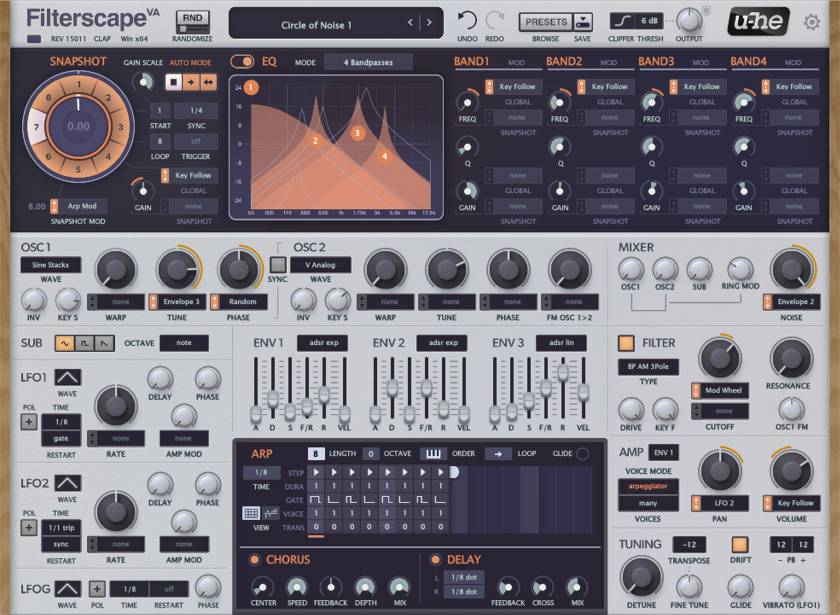
Early analog synthesizers did not allow you to save the sounds you created, so you had to turn a knob each time you created a sound. This may seem inconvenient from today's perspective, but you would inevitably grasp the role of each parameter. As a result, it became possible to change the sound in real time, allowing for a more flexible approach. Today, we rely too much on presets, and real-time control may be rare. In this column, I would like to focus on which parameters can be tweaked and how they can be changed. Also, since subtractive analog synths are all similar in structure, I believe this knowledge can be applied to other synths.
Combining oscillators with different pitches
This time, I will create a standard synth sound by changing the pitch of several oscillators. 2 highly flexible OSCs and a SUB oscillator for bass reinforcement are available in VA, allowing for relatively flexible settings.

OSC1 and OSC2 can be set to handle pitches in the range of plus or minus 2 octaves relative to the keyboard key (NOTE) played. Tune can be adjusted in 0.2-cent increments (1/500 of a semitone), and phase can be adjusted in the range of ±1/2pi. The SUB can be used to play the same note (NOTE), an octave lower, or two octaves lower than the note played on the keyboard, and it can be actively used for purposes other than sound reinforcement.

5th Sound
This is a standard sound using OSC1 and OSC2. By raising one of the OSCs by 5 degrees, a thicker sound can be produced even on a single note. The 5th degree, for example, is the note “so” when “do” is the root. So, you are always playing two notes, the root and the 5th degree. The third overtone is actually the same note that is played when you play a single note, so it is easy to get used to and it doesn’t interfere too much when you play chords. It is the second easiest sound to handle after the octave.
Movies use sawtooth waves, and sawtooth waves are rich in integer harmonics. The figure below shows the frequency spectrum of the 5th sound, with the sawtooth wave of “Do” in blue and the sawtooth wave of “So” in green. There are many overlapping notes. This shows that the 9th and M7 tones are rather strong in the lower harmonics. Therefore, when playing chords, you need to be careful of note clashes.
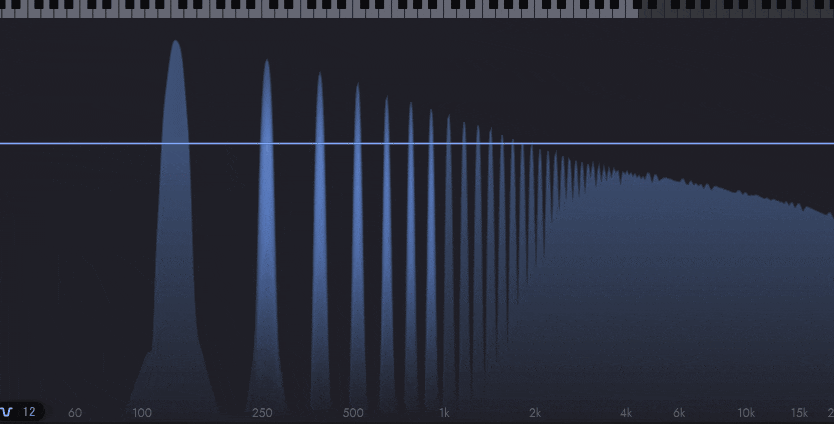
Use the synth bass SUB 1 octave lower
When synths were first used in the 60s and early 70s, there were only monophonic synths. In live performances, the lead or bass guitarist would inevitably be the one who could play with a single note. Synth bass was recognized as a new type of bass that’s different from wood bass and electric bass. In particular, the synth bass was able to effortlessly produce a heavy bass note lower than E1 (41 Hz), which had been the lowest note of the conventional bass, and as a result, it seems to have promoted the multi-stringing of the electric bass. In the video, OSC1 is set to sawtooth wave and the sub-oscillator uses a sine wave to layer notes one octave lower. By applying a filter, I tried to create a liquid sound that is typical of synth bass. Drums are also sounding, but it is a different sound source.
Using SUB 2 octaves lower
The use of the SUB two octaves lower is more limited than the use of the SUB one octave lower. Here, I changed the idea and instead of using SUB as a reinforcement, I used it as a reference tone and treated OSC1 as an overtone; I set OSC1 to a non-integer order overtone to create a sparkling sound like a somewhat dissonant somatic instrument.
Detuned sound
The pitch of the two OSCs is slightly shifted; you can fine-tune the pitch with TUNE on the OSCs, but a more convenient method is to use DETUNE in the TUNING menu at the lower right of the panel. In this case, set DETUNE to 1. The unit is in cents. This will raise the pitch of OSC1 by about 1 cent and lower the pitch of OSC2 by about 1 cent. As a result, the difference in pitch between OSC1 and OSC2 will be about 2 cents. Furthermore, by matching the volume, the notes from the two OSCs are strengthened or weakened by each other, resulting in a slow undulation. If the pitch deviation is too large, the undulation will be too fast, so delicate adjustment is necessary. By the way, the maximum is 100 cents, so OSC1 is a semitone above and OSC2 is a semitone below, resulting in a whole tone difference (200 cents). The video shows the pad sound with detuning.
3 Chords
If you set OSC1, OSC2, and SUB oscillators to different pitches, you can play chords on a monophonic synth. Here, SUB is set to NOTE and the note played is the root note. The chord is completed by setting OSC1 and OCS2 to the desired harmony. At the beginning of the video, the chord is an average chord, but at the end, I set the minor chord to a pure chord so as not to muddy the sound. The tone is distorted a bit like an electric piano by adding Filterscape VA's unique click. I also used portamento in the monophonic mode to create a different atmosphere from the usual polyphonic mode. Depending on what you are playing, it’s easy to lose tonality in many cases, so you need to use it with a certain amount of caution. Remember that this is only a setting to play chords forcibly with a monophonic synth, so it is not easy to use.
In the next issue we will look at noise generators.
The “sound & person” column is made up of contributions from you.
For details about contributing, click here.






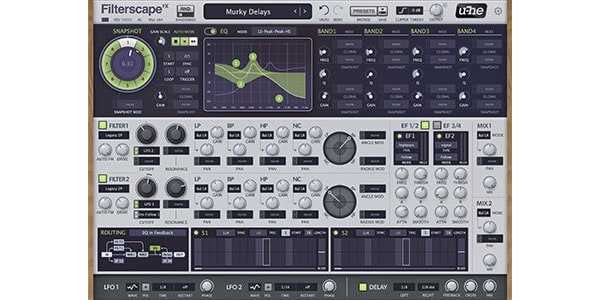





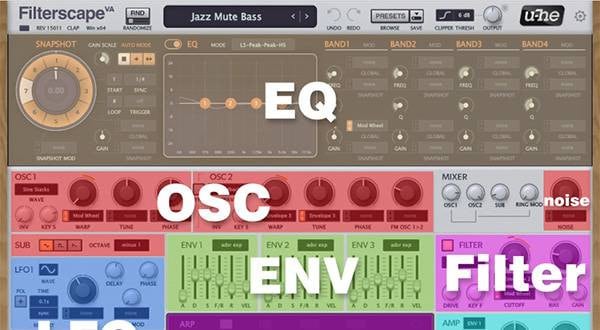
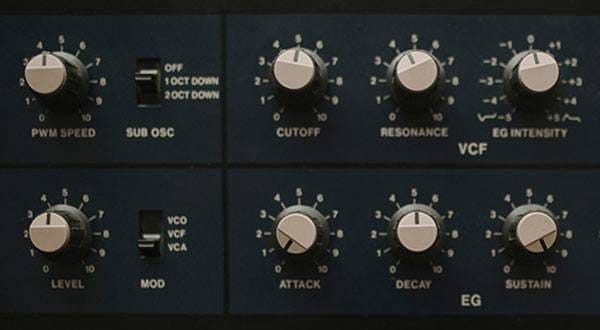
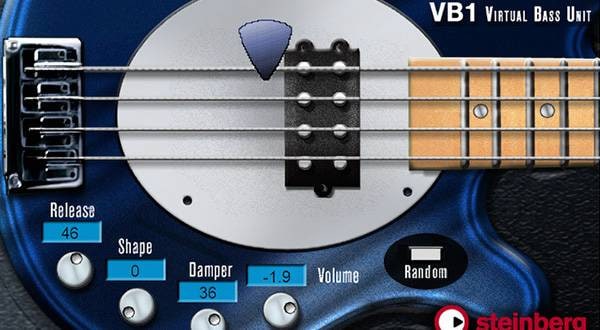
![[2025 Latest Edition] Choosing a Synthesizer/Popular Synthesizers Ranking](/contents/uploads/thumbs/2/2022/9/20220916_2_19446_1.jpg)
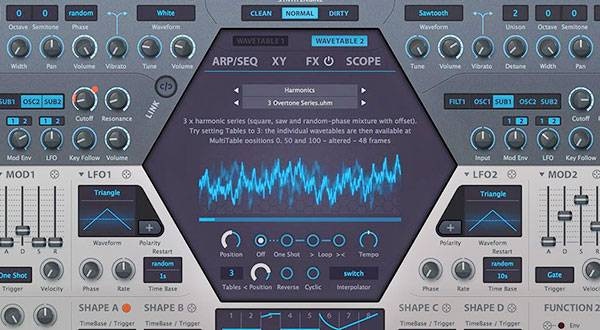
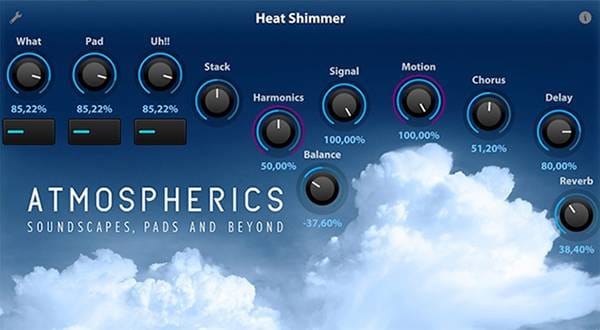
 厳選!人気のおすすめオーディオインターフェイス特集
厳選!人気のおすすめオーディオインターフェイス特集
 DTMセール情報まとめ
DTMセール情報まとめ
 機能で選ぶ オーディオインターフェイス
機能で選ぶ オーディオインターフェイス
 停電時にパソコン、作曲データを守る!!
停電時にパソコン、作曲データを守る!!
 キーボードスタートガイド
キーボードスタートガイド
 DTM・DAW購入ガイド
DTM・DAW購入ガイド















